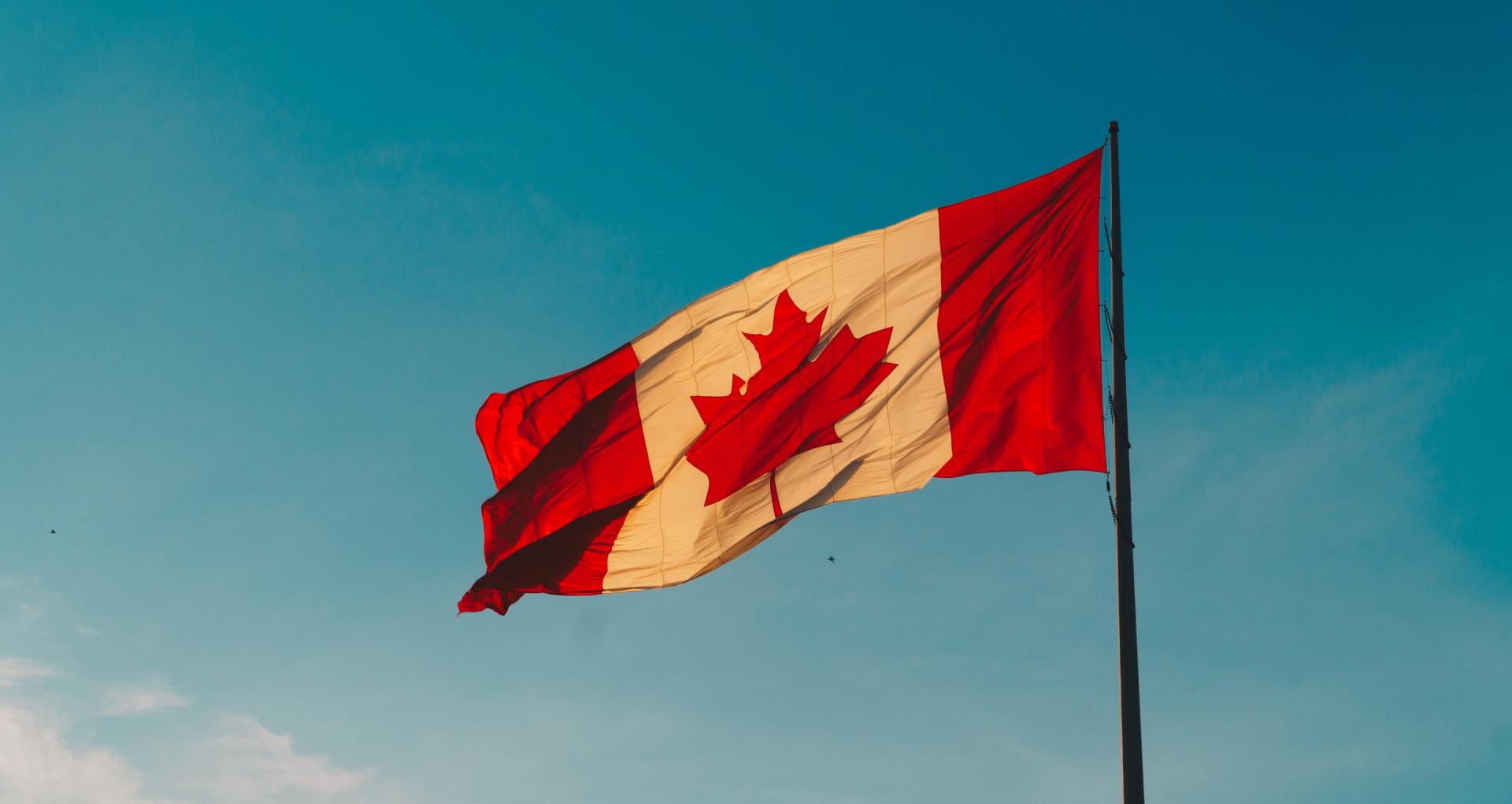Individual and Business COVID Resources

The application portal for the CERB $2,000/month funding is available starting today through CRA My Account. Use the following schedule to apply: April 6th - Birth months of January, February and March April 7th - Birth months of April, May and June April 8th - Birth months of July, August and September April 9th - Birth months of October, November and December Open for anyone after those dates Where to apply: https://www.canada.ca/en/services/benefits/ei/cerb-application.html Two important points: CRA has clarified that business owners who are compensated through dividends rather than wages are eligible for the CERB if their 2019 income is $5,000 or more. CERB vs EI If you have applied for EI since March 15th, your application will automatically be transferred to the CERB process, so there is no need to apply for CERB . At the end of the 4 month CERB program, you could resume receiving EI if eligible and the CERB payments will not use up any of the EI-eligible weeks. For anyone who applied to EI prior to March 15th and received benefits, you will stay in the EI program and continue receiving the EI payments. A good summary here: https://globalnews.ca/news/6770564/coronavirus-ei-beneficiaries-federal-emergency-benefit/ More answers to common questions are available here: https://www.canada.ca/en/services/benefits/ei/cerb-application/questions.html

Details are here: https://www.canada.ca/en/revenue-agency/campaigns/covid-19-update/frequently-asked-questions-wage-subsidy-small-businesses.html Highlights: A 10% wage subsidy is available for any wages paid between March 18th and June 20th, to a maximum of $1,375 per employee and $25,000 per employer To calculate: If you have 5 employees earning monthly salaries of $4,100 for a total monthly payroll of $20,500, the subsidy would be 10% of $20,500, or $2,050. To claim the subsidy: Reduce your payroll remittances by the amount of the calculated subsidy in the first remittance period that includes wages paid between March 18th and June 20th. So, for a regular remitter, the remittances due April 15 will be reduced by the amount of the subsidy. The subsidy does not need to be used to reduce remittances immediately. You can pay full remittances now and then request the calculated subsidy be paid out to you at the end of the year or applied to next year's remittances. To report the subsidy: CRA has not yet released info on how to report the subsidy calculation or amount. This is expected in the near future. The subsidy will be considered taxable income to your business in the year it is received. The team at Insight LLP is committed to helping our business clients access and understand the latest information on the ever-changing Covid-19 situation. Please contact us directly with any questions specific to your business needs at 403-524-4878 or via email.The body content of your post goes here. To edit this text, click on it and delete this default text and start typing your own or paste your own from a different source.

Private sector employers will have immediate financial relief by deferring WCB premiums until early 2021, effectively for one year. Employers who have already paid their WCB premium payment for 2020 are eligible for a rebate or credit. For small and medium businesses, the government will cover 50 per cent of the premium when it is due. Large employers will also receive a break by having their 2020 WCB premium payments deferred until 2021, at which time their premiums will be due. Info from: https://www.alberta.ca/release.cfm?xID=699045A66118C-FA03-F4F5-959455E3316B8564

There were some new announcements today about funding that will be available to individuals. You may want to share this information with employees or those you have been forced to layoff. Alberta Emergency Isolation Support As a temporary bridge until federal funding is available in April, Alberta has announced a one-time emergency isolation support payment of $1,146 for Albertans who are required to self-isolate or are the sole caregiver of someone in self-isolation and no other source of compensation is available. Details on who is eligible and how to apply are here: https://www.alberta.ca/emergency-isolation-support.aspx Canada Emergency Response Benefit Previously announced programs for Emergency Care and Emergency Support Benefits have now been combined into the Canada Emergency Response Benefit (CERB), which will provide eligible individuals with $2,000/month for four months. The application portal for this benefit will open on April 6, 2020. As an employee, contractor or self-employed person, you are eligible if: Your have been laid off or terminated You are sick or quarantined, or taking care of someone who is sick or quarantined You must stay home without pay with kids who are sick or at home due to school or daycare closures You are still working but not receiving any income because of Covid-19 disruptions This program is designed to reduce the strain on the EI system and get funds into the hands of Canadians faster. Payments are expected to be received within 10 days of application, so the first payments should be out after April 16, 2020. Already receiving EI regular and sickness benefits? Do not apply for the CERB. You will continue to receive your EI benefits. Already applied for EI and application has not been processed? Do not reapply for the CERB . Your application for EI will be used for the new program. The news release is here: https://www.canada.ca/en/department-finance/news/2020/03/introduces-canada-emergency-response-benefit-to-help-workers-and-businesses.html Other funding: Other previously announced funding is expected to reach Canadians in May. A one-time GST credit for low/modest income individuals should give an extra $400 for singles and $600 for couples. If you are eligible, you will get it automatically. No need to apply. The increased Canada Child Benefit (CCB) will add $300/child on the May benefit cheque. If you already receive CCB, no application is required. Personal tax filing and payment deadline extensions: The T1 filing deadline has been extended from April 30th to June 1st. However, if you receive GST credits, Child Benefits or Guaranteed Income Supplements, you should file as soon as possible to ensure there are no interruptions in these benefits. The personal tax payment deadline has been extended from April 30th to after August 31st, with no interest or penalties. This only applies to amounts due from 2019 tax returns, so if you have any older tax debts, there is no deferral available. There is no deferral for GST payments. If you are self-employed and registered for GST, your regular filing and payment deadlines still apply. The team at Insight LLP is committed to helping our clients access and understand the latest information on the ever-changing Covid-19 situation. Please contact us directly with any questions specific to your business needs at 587-813-0529 or via email.
The federal government announced today that the temporary wage subsidy for small and medium sized businesses will be increased from 10% to 75%, with the goal of encouraging struggling companies to retain and/or rehire employees. So far, few details are known, other than: The subsidy will be available for three months, retroactive to March 15th Eligibility criteria are expected to include an assessment of the impact of Covid-19 on sales More information is expected to be released on Monday. We will keep you updated. GST payment deferrals GST payment deadlines are extended to June 30th for the following eligible GST reporting periods: Annual filers - GST returns or instalment payments are due in March, April or May. This will include all corporations with fiscal year ends of December 31/19 through February 29/20. It will also include all proprietorships with December 31/19 year ends. Quarterly filers - GST returns for the January 1/20 through March 31/20 reporting period. This means that any businesses with quarterly GST returns due March 31/20 (for the December 31/19 through February 29/20 reporting period) still need to pay their GST in March. Monthly filers - GST returns for the February, March and April, 2020 reporting months. Remember that this is just a deferral of the payments. The filing deadline for GST returns has not been extended. Late filing is still likely to result in penalties. Details available here: https://www.canada.ca/en/department-finance/news/2020/03/additional-support-for-canadian-businesses-from-the-economic-impact-of-covid-19.html Canada Emergency Benefit Account $40,000 bank loans will also be available to qualifying businesses and not-for -profits to assist with operating costs while revenues are reduced. Interest-free for the first year If repaid by December 31, 2022, 25% of the loan or $10,000 will be forgiven To qualify, you must have paid between $50,000 and $1,000,000 for payroll in 2019 Contact your financial institution for more information on how to apply. Info available here: https://www.canada.ca/en/department-finance/news/2020/03/additional-support-for-canadian-businesses-from-the-economic-impact-of-covid-19.html
Yesterday, the federal government released new information about the proposed 75% temporary wage subsidy. Full details are not available, but here's what we know so far: 12 week program available between March 15th and June 6th The federal government will subsidize 75% of employee pre-crisis weekly remuneration to a maximum benefit of $847/week There is no overall limit on the total subsidy claimed by any employer Employers must make every effort to pay the remaining 25% of the wages to maintain pre-crisis wages Eligible business: Corporations, proprietorships, partnerships, non-profits and charitable organizations Must have a decrease in revenue of at least 30% from the same month in the prior year. Revenue is defined as being from business carried on in Canada from arm's length sources. More details to come. This previously announced 10% wage subsidy is also still available to qualifying businesses; however, any benefit received under the 10% subsidy would reduce the benefit of the 75% subsidy. The application process is not open yet but is expected to be through CRA's My Business Account. We recommend that you register for a My Business Account as soon as possible if you don't already have one. Start here: https://www.canada.ca/en/revenue-agency/services/e-services/e-services-businesses/business-account.html More details on the program are available here: https://www.canada.ca/en/department-finance/news/2020/04/the-canada-emergency-wage-subsidy.html This program is still in the "proposed" stage and new legislation needs to be approved before the details are finalized. If everything is approved, funds are expected to start flowing within 6 weeks. As always, we will keep you updated on any changes as we learn about them.
If your business is experiencing cash flow issues as a result of Covid-19, we highly recommend that you talk to your financial institution about the Canada Emergency Benefit Account immediately. The program provides interest-free loans of up to $40,000 to small businesses and not-for-profit organizations to help cover costs while revenues are reduced. To be eligible, the business must have paid between $50,000 and $1,000,000 for payroll in 2019 Key facts The loan is interest-free for the first year If repaid on or before December 31, 2022, 25% of the loan (up to $10,000) will be forgiven The forgiven portion of the loan will be taxable income in the year it is forgiven Contact your financial institution directly for more information on how to apply Info available here: https://www.canada.ca/en/department-finance/news/2020/03/additional-support-for-canadian-businesses-from-the-economic-impact-of-covid-19.html

Yesterday, the federal government released new information about the proposed 75% temporary wage subsidy. Full details are not available, but here's what we know so far: 12 week program available between March 15th and June 6th The federal government will subsidize 75% of employee pre-crisis weekly remuneration to a maximum benefit of $847/week There is no overall limit on the total subsidy claimed by any employer Employers must make every effort to pay the remaining 25% of the wages to maintain pre-crisis wages Eligible business: Corporations, proprietorships, partnerships, non-profits and charitable organizations Must have a decrease in revenue of at least 30% from the same month in the prior year. Revenue is defined as being from business carried on in Canada from arm's length sources. More details to come. This previously announced 10% wage subsidy is also still available to qualifying businesses; however, any benefit received under the 10% subsidy would reduce the benefit of the 75% subsidy. The application process is not open yet but is expected to be through CRA's My Business Account. We recommend that you register for a My Business Account as soon as possible if you don't already have one. Start here: https://www.canada.ca/en/revenue-agency/services/e-services/e-services-businesses/business-account.html More details on the program are available here: https://www.canada.ca/en/department-finance/news/2020/04/the-canada-emergency-wage-subsidy.html This program is still in the "proposed" stage and new legislation needs to be approved before the details are finalized. If everything is approved, funds are expected to start flowing within 6 weeks. As always, we will keep you updated on any changes as we learn about them.
Just a reminder for eligible businesses that the 10% wage subsidy for wages paid March 18 to March 30 should be deducted from your April 15 payroll remittance payment. If you missed making this deduction for April 15, the subsidy can be carried forward and deducted against the next remittance. Check here for more information on determining your eligibility and calculating the benefit: https://www.canada.ca/en/revenue-agency/campaigns/covid-19-update/frequently-asked-questions-wage-subsidy-small-businesses.html We recommend that businesses eligible for both the 10% wage subsidy (TWS) and the 75% wages subsidy (CEWS) claim the 10% subsidy first to help with immediate cash flow issues by reducing payroll remittances and then apply for the 75% subsidy when it is available in the next couple of weeks. $40,000 CEBA Business Loan We have some new information about how businesses can use the $40,000 loan funds. A refresher on which businesses are eligible and the loan terms: Canadian operating business that was in operation and had a CRA business number as of March 1, 2020 Had an active business bank account with a financial institution as of March 1, 2020 (personal accounts are not eligible) Paid wages of $50,000 to $1,000,000 in 2019 (Box 14 on the 2019 T4 Summary) Maximum loan of $40,000 is interest free 25% of the loan is eligible for forgiveness if paid in full by December 31, 2022 You apply for the loan through your bank, which bank will forward the application to the federal government for review and approval (5-7 day approval process is expected) You can only apply at one bank and that must be your primary financial institution There will be limits on how these loan funds can be used: Must be used for operating expenses that can't be deferred, such as payroll, rent, utilities, insurance, property taxes, regularly scheduled debt payments Can't be used for prepayments or refinancing of existing debt, payment of dividends, shareholder distributions or increases in management compensation
Good news! At his press conference this morning, the Prime Minister announced an expansion of the $40,000 CEBA loan program. Originally, the program required businesses to have paid 2019 wages of between $50,000 and $1,000,000. The new requirement is for 2019 wages of $20,000 to $1,500,000. This is a very recent change, so it may take a bit of time for the banks to update their application forms, but be sure to contact your banker for more information. You will still need to provide a copy of the 2019 T4 summary proving that you meet the wage requirements. There was no change in the eligibility requirements to open the program to non-wage paying business. Dividends still do not qualify.
